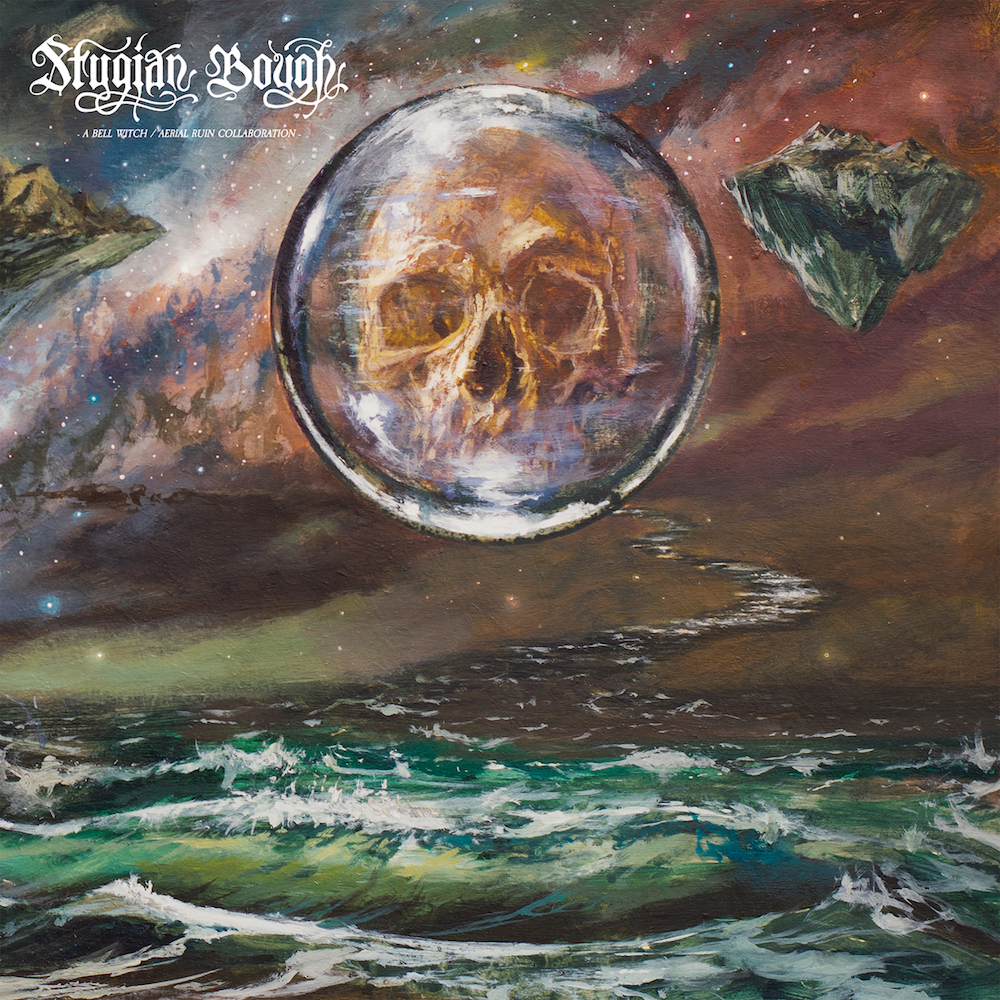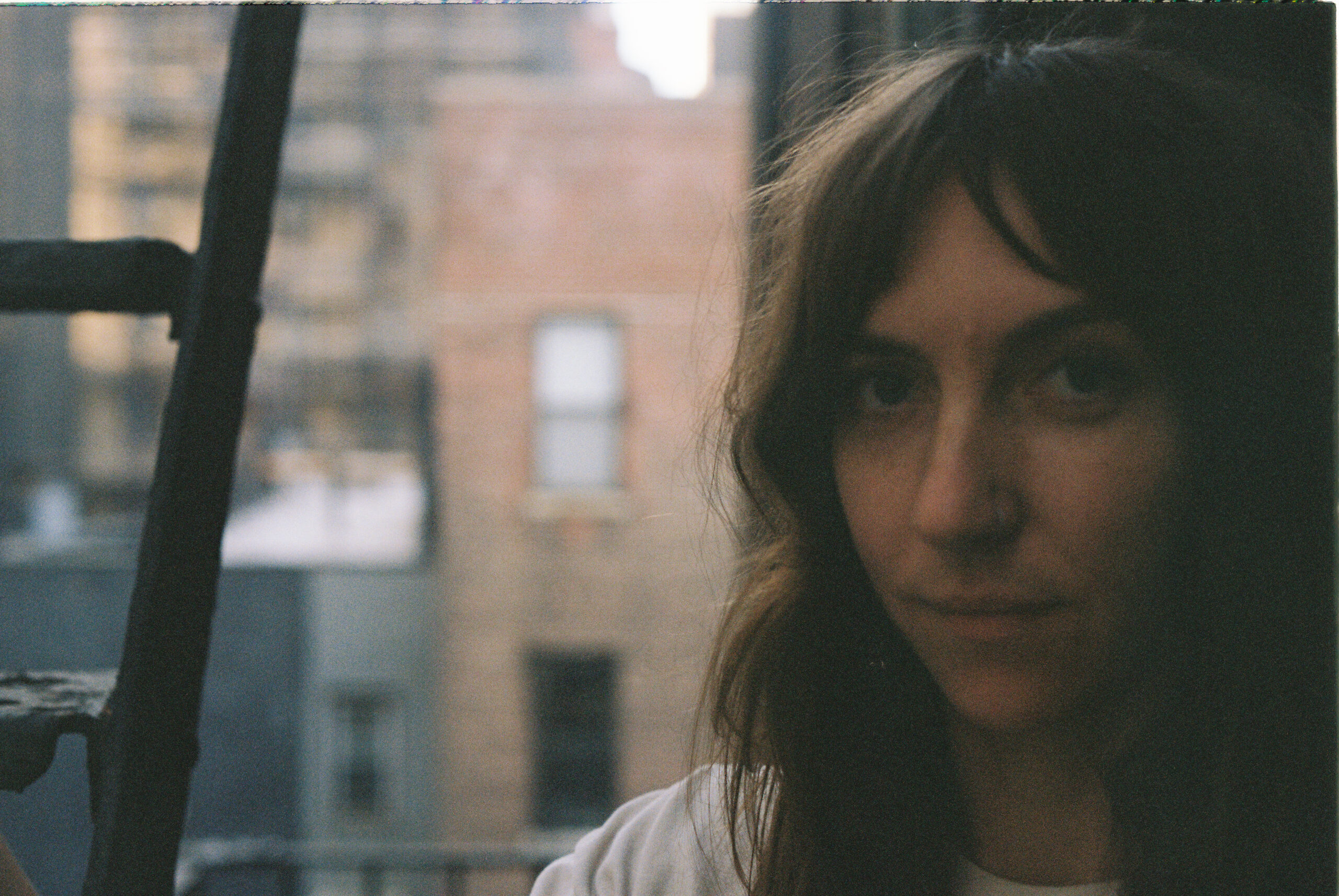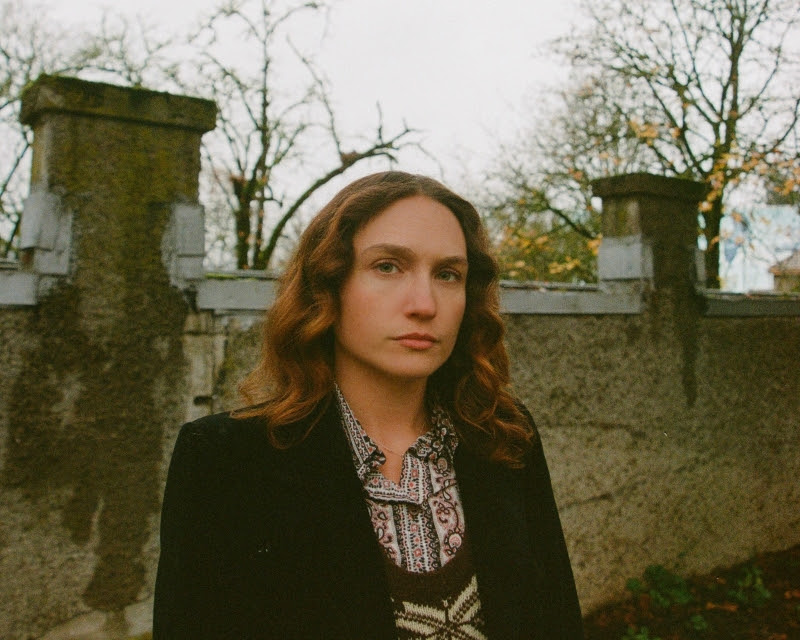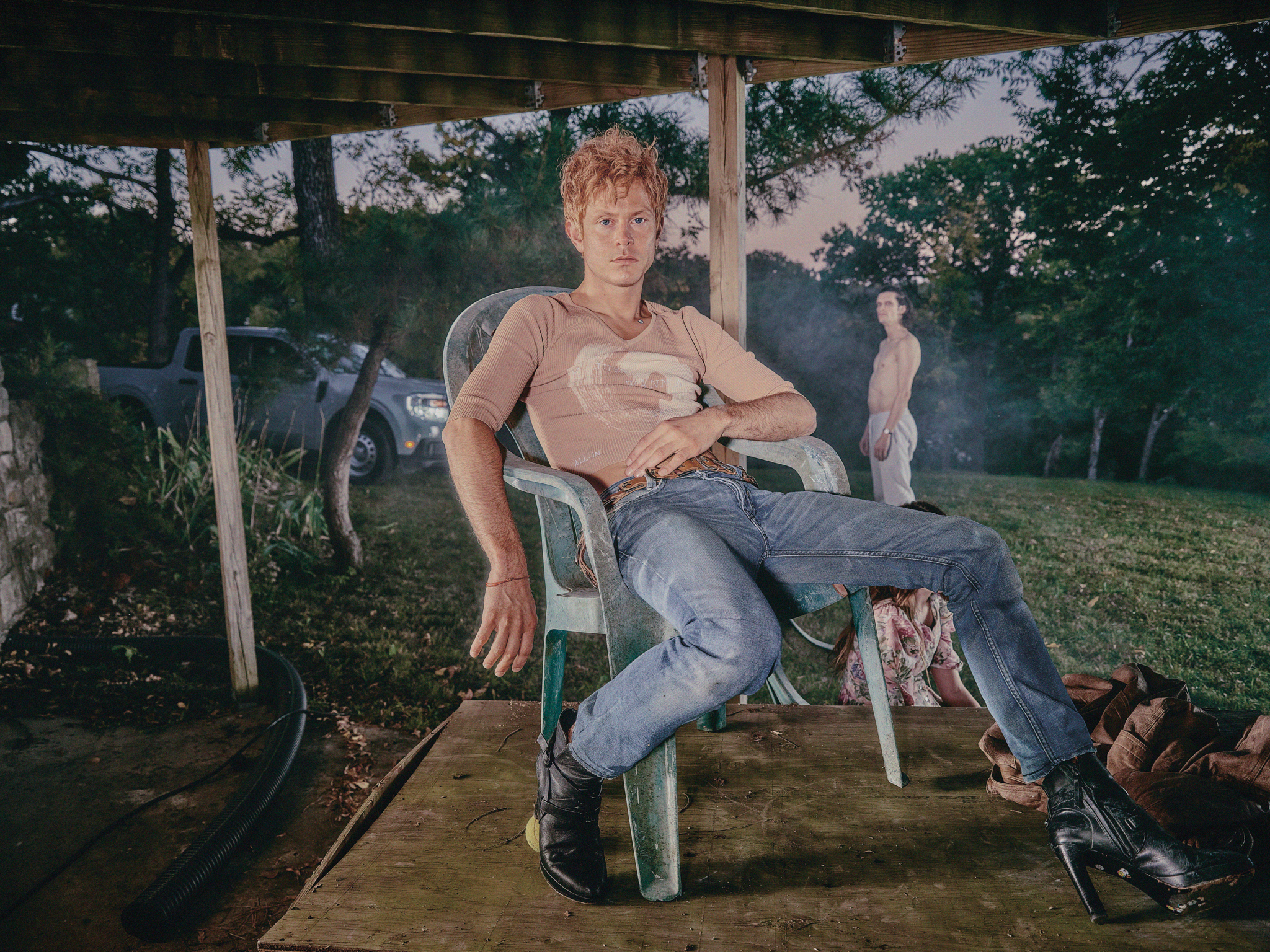The last time the Seattle doom metal duo Bell Witch released an album was in 2017, and chances are you could still be making sense of that music nearly three years later. The colossal, mind-expanding Mirror Reaper was one 83-minute song that completely warped your sense of time as it stretched everything out into a long, haunting meditation on life and death. It had been inspired by the loss of Adrian Guerra, the founding member and original drummer of the group. In responding to his passing, Dylan Desmond and Jesse Shriebman made the kind of intense grief purge that looked mortality straight in the eye -- an album that left such a mark on people that you always knew it would be hard to follow.
Desmond and Shriebman weren't entirely alone in making Mirror Reaper, though. Erik Moggridge, who makes dark folk as Aerial Ruin, is a longtime part of the Bell Witch story, and his presence was perhaps more profound than ever on Mirror Reaper. So, as it turns out, Desmond and Shriebman wouldn't have to follow up Mirror Reaper alone either. A couple months ago, they announced Stygian Bough Volume I, a full-length collaboration between Bell Witch and Aerial Ruin.
This time, they were drawing inspiration from perennial mythological themes, influenced by James George Frazer's 1890 work The Golden Bough. In particular, Desmond was inspired by the story of rites in ancient Italian temple where slaves became kings by acquiring the Golden Bough and killing the king, rising to power but then realizing the same process would play out once more. "In short, the golden bough made a king out of a slave only to find they were now enslaved to a different sort of tyranny, always stalking them from the darkest shadows of their imagination," Desmond explained when the album was announced. "From this perspective, the 'golden bough' is better understood as a deception casting darkness. Thus, Stygian Bough.”
When they started to develop ideas with Moggridge, they looked back to an earlier Bell Witch song -- their first collaboration with Moggridge, "Rows (Of Endless Waves)." Moggridge took that as a jumping off point and connected it with the themes of the new album. "They presented that song to me in a mostly instrumental form with the idea that it's about a ghost trapped on rows of waves that can’t reach the land," he explained recently. "I ran with this idea and started to think of the ghost of a king who, if he reached land, could be reborn and rule again. The king is also a larger metaphor for humanity who rules over the planet and other species. On this new album our ghost upon the waves flees not towards the land but towards death." The narrative of the album became stream of consciousness, outside of time in order to reflect cyclical representations of life and death.
Musically, the three men achieved that by trying to meld the sounds of Bell Witch and Aerial Ruin, incorporating what they all do well in their own worlds without losing each of their aesthetics. As a result, the towering compositions on Stygian Bough oscillate between their polarities: Desmond's bass and Shreibman's drums getting the heaving Bell Witch sound where simple riffs and giant single notes can feel like the earth rupturing, while Moggridge's passages are ghostly and spectral. A lot of the album is darkly beautiful. And at five songs that stretch to over an hour in length, Bell Witch and Aerial Ruin are still using space to their benefit. A 13 minute acoustic lament, blackened drones building to some kind of resolution -- Stygian Bough is as intense and transporting a journey as we've come to expect from these musicians.
Ahead of its release, we asked Desmond, Shreibman, and Moggridge to give us some details about how they put this whole thing together. Now that you can hear Stygian Bough Volume I for yourself, read along below for some liner notes and stories behind the songs.
1. "The Bastard Wind"
DYLAN DESMOND: This was the first song we wrote as the collaboration. Erik sent us the intro riff and I was immediately taken by it. In all of our discussion regarding collaboration I could never understand how Jesse and I were going to do anything that could compliment the Aerial Ruin style; it thrives on loneliness and having bass, drums, and organ complicates that. I'm pleased with the direction it went and I think it sets the tone well for the rest of the album that follows.
ERIK MOGGRIDGE: As Dylan pointed out this was the first song we wrote for this album. Soon after the guys approached me about doing a collaboration album I recorded a demo that had sketches of the riffs and vocal melodies for the beginning and end of the song. I wanted to write something that would work as an acoustic Aerial Ruin type song but could also be done as a loud heavy Bell Witch style riff. The acoustic guitar part in the the first three minutes worked well for this and was great to write multiple vocal melodies over. It was also exciting to imagine what it would sound like as a Bell Witch riff with the hugeness of Dylan's tone and two handed style. It ended up working really well that way too and was beefed up by electric guitar as well. Dylan's bass solo on the album in this section -- starting at 16:36 and going to the song's end -- is so beautiful and one of my favorite parts of the record. The notes he chose are just so sublime and bring the song to a perfect crescendo at the end.
Also on that original demo was the vocal melody for the part that begins at 11:55 with the line "deeds that bled away" except I had it over this strummy acoustic guitar part. It was Jesse's idea to change that part to these massive hits and wrung out notes underneath the vocals. We spent a long time getting this part right in the studio with all three of us playing it live. There was a jazz band in the studio down the hall who asked why we have a song with just one very loud note [Laughs].
I originally thought that these parts might make up an entire song but Dylan wanted to break up the more melodic ear candy material with tension-building parts and came up with all the riffs in the songs middle with this in mind. The idea being the listener would be expecting the melodic stuff to continue but instead have to wade through all these edgy riffs first, making the payoff bigger at the end. We ended up with a 10 minute journey into heavier and heavier material. Jesse did a great job building up the tempos that give that part this dynamic arch and gets almost mid-tempo before crashing down again. His death metal vocals in that section really bring that part home too.
JESSE SHREIBMAN: This song was a blast to write. It was the first time we had ever played together with guitars, and we had no idea what was going to happen. We spent a ton of time talking about what we wanted the band to sound like before playing, but it was so cool watching it all come together organically. Once we finished writing this song I think we all realized that the collaboration was going to work.
2. "Heaven Torn Low I (The Passage)"
MOGGRIDGE: I had a version of this demoed at home with the acoustic guitar, [with] vocals and arrangement pretty close to the album version. I was unsure that a 13-minute acoustic song was the best thing for this album. I presented it to Dylan and Jesse and they were very enthusiastic about including it but very respectful about not wanting to crowd the minimalism with busy accompaniments. Dylan was hesitant to even add anything on bass but quickly came up with these gorgeous delay and reverb drenched bass swells that I remember calling "the sweet spot" during writing sessions. Jesse likewise kept his percussive additions very tasteful and minimal and in the studio also added the weird shaker stuff that sounds like someone walking on the beach. While recording, Dylan also added that menacing sounding swell on top of the more ambient stuff which really adds a lot. Around the eight minute mark the bass/drone interlude breaks it all up -- nicely culminating in a pretty layered, textured, and epic piece.
DESMOND: Erik brought this song to the table and I was equally terrified and excited at its size and density. It's much slower and spread out than the normal Aerial Ruin song and that opened the door for some appropriate Bell Witch stylistic interjections. After a few hours of charting and days of experimenting we came to a good skeletal outline. There was a lot of back and forth on me doing vocal harmonies below Erik on this. I think he and I switched positions a few times on whether they were necessary or better left in Erik's department. I’m happy with the final conclusion we came to.
SHREIBMAN: When Dylan and Erik presented the initial skeleton of this song to me, it was clear to me that this was going to be different than most songs I have played, in the sense that drums were not going to be necessary. We spent a long time developing the organ and synth parts together to add texture without overdoing it. I am very happy with how this song turned out and it was definitely a different style than I was used to playing. This song is one of my favorites on the record.
3. "Heaven Torn Low II (The Toll)"
SHREIBMAN: If I'm not mistaken, this was the last song we wrote, and we wrote it the last few days before we entered the studio. It has turned out to be one of my favorite moments on the record. It was written incredibly quickly and naturally, and all the parts seemed to just fall into place. Recording the organ in the studio to this song was awesome.
MOGGRIDGE: This was written two or three days before we entered the studio and was written so quickly I have a hard time remembering how the main riff came to be. I originally wanted "Heaven Torn Low" to be just one song but wanted the acoustic section to end with the intro acoustic riff from "I (The Passage)" to be played heavy Bell Witch style. We tried that for a while but then I think Dylan started playing a couple of slow notes and I joined in, Jesse kicked in with that slow beat and the riff for Part 2 was born. I came up with the lyrics and vocal melody just as quickly. Despite being based around one riff it grew long enough that we realized it was its own song, not just the ending of "I (The Passage)." I really like the way the bass, guitar, and organ are all able to embrace the simplicity of the riff in this song.
DESMOND: I was initially hesitant about this song because we already had so much unexpected material for the album, not to mention distorted material that might throw off the acoustic/distorted ratio. Erik persisted with us trying it out and as it came together it became obvious we all loved the song. I think Erik's vocals make it particularly special. I love the space in it
4. "Prelude"
DESMOND: This track started out as us just playing the riff form "The Unbodied Air" clean and it quickly became an intro. I like the placement on the record -- it serves as a buffer between "Heaven Torn Low II" and "The Unbodied Air," which are both much more substantial than the "Prelude" itself. It ended up having something of a Black Sabbath interlude feel, which is something I've always loved about their records.
SHREIBMAN: I think one of the most interesting parts of being in a band is watching how an idea can change and mold over time. This did begin as an intro, but over time we all found that it served better as an interlude. This was also a great opportunity to let that Hammond B3 shine a little.
MOGGRIDGE: This is simply the finale riff from "The Unbodied Air" played on acoustic guitar with some really nice bass and organ accompaniment. It grew long enough that we started feeling like it was a standalone interlude and not just an intro so it became its own piece.
5. "The Unbodied Air"
SHREIBMAN: This song was particularly fun to write because we had already completed "The Bastard Wind." We had a clearer idea of the direction and sound we were working on for this record and had a really good time changing parts, and manipulating ideas. One of my favorite memories of writing this song was coming up with a way to have a dueling guitar part with one guitar and one bass. That part rips!
MOGGRIDGE: This song has some of my favorite Dylan riffs in it from the heaviness of the beginning to the triumphant and beautiful album finale riff. They were all great to write and sing vocals over, as was Jesse and Dylan's quiet organ/bass mid-section. This song also has some of my favorite electric guitar stuff, especially the first solo.
DESMOND: I like the way this song stylistically connects with "The Bastard Wind," that reminds me of Asunder playing Candlemass songs. This song was written in two main chunks. The beginning came together somewhat easily but we eventually hit a brick wall with the direction it needed to fully develop. There is a collection of riffs in this song that eventually came to the table centered around one which we called "The Finale riff." This revealed to us the complicated origins of all of our regional English speaking dialects as none of us pronounced the word "Finale" the same way. Jesse was particularly offended by my pronunciation and we both instinctively gang up on Erik for most anything in addition. I’m not sure if things will ever be the same.
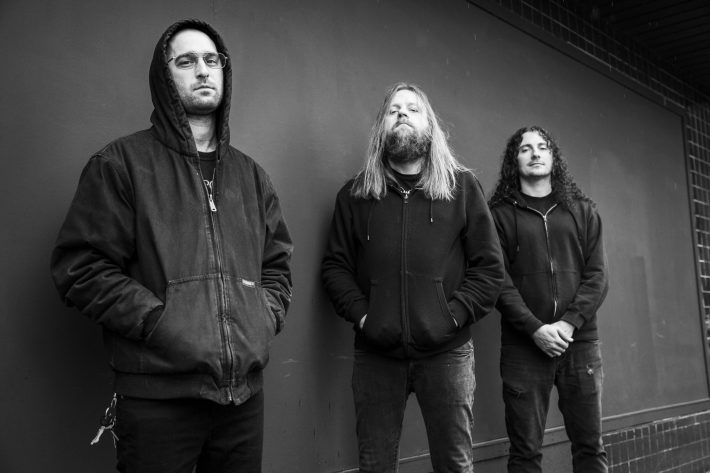
Stygian Bough Volume I is out now on Profound Lore.
